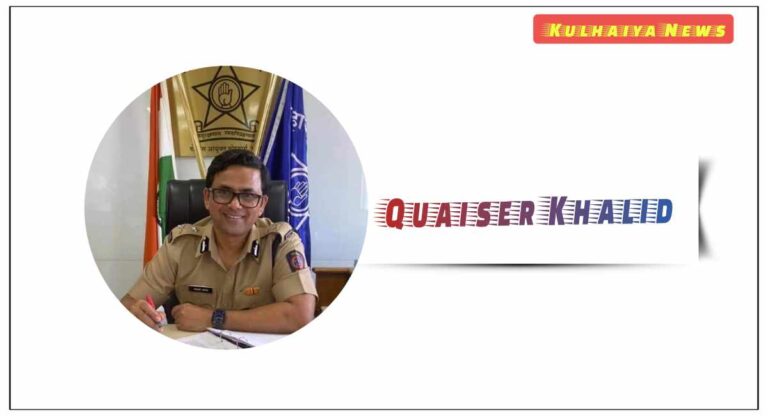The Kulhaiya is a Muslim community in the Purnea, Araria Kishanganj, Katihar district of Bihar in India and Nepal’s southern part (mainly Denniya). They are sub-groups of the Shaikh community.
Individuals who began this Muslim community in seemanchal location were Arabs who inhabited India for more than 1000 years. A few contributors to the network are stated to be the descendants of Hazrat Abu Baqar Siddiqui, an accomplice Prophet Muhammad.
As Arabs and different parts of India, Muslims had been reaching all areas of Bihar to spread Islam, some of them reached the Purnia district of Bihar to settle, and they tried to spread Islam.
All Muslims in the seeming Seemanchal area initially belonged to the Shaikh community.
They are spread over three distinct sub-communities, the Kulhaiya ( Khutta ), Surjapuri and Shaikhra. Some are Shaikh based on the local language, but the culture is the same.
The Kulhaiya (Khutta), Surjapuri and Shaikhra are three distinct sub-communities that have spread throughout Seemanchal. These communities have unique languages, beliefs, customs, traditions and values.
These three sub-communities share some commonalities, such as their language, known locally as ‘shaikh’. All three groups predominantly speak this language but also have variations depending on the region they come from.
Other common aspects between them include traditional social practices like arranged marriages and dowry systems, as well as religious beliefs related to Islam and Hinduism.
Name of Kulhaiya
Kulhaiya’ is said to intend ‘cap wearer‘ as the phrase ‘kulah’ means ‘cap’ in Persian and refers to distinctive pleader topi.
This makes the mushairas modest. In keeping with a few other faculty of concept, the modesty of Kulhaiyas is described as ‘kul ‘ way ‘overall’ and ‘haya’ method ‘decency’and kulhaiyas famous as overall decency.
Mughal time of Kulhaiya
Kulahiyas served as soldiers inside the Mughal Empire, the Faujdars of Purnia the time of a Mughal nawab Saif Ali Khan on the recommendation of the Delhi Sultanate appointed kulahiyas to guard the Indian border at the side of Nepal.
British rule and the Kulhaiya community
During British rule, most Kulhaiyas suffered from education, Health-related problems, financial problems and security, but some Kulhaiya enjoyed and supported British rule.
Kulhaiyas served as soldiers during the Mughal Empire; that’s the reason British officers punished the Kulhaiya community peoples.
Landlords (zamindari) were established by British Government, like the Mahmadia estate, which collected agricultural tax.
Many areas seem anchal exploited by the landlords mistreating people like animals, and they never wanted kulhaiya people to be literate so they could successfully play their landlord’s rules.
In 1934, the earthquake severely affected the people of the seemanchal area. Kulhaiyas suffered from epidemics diseases like cholera, smallpox and malaria.
At that time, there were limited facilities for higher education in this area, and the students migrated to Calcutta, Patna, or Makhtab at home—the most challenging time in history for Kulhaiyas to survive, precisely opposite to the Mughal Empire.
Kulhaiya people actively participated Kisan Sabha movement. The Kisan Sabha movement originated against landlords and the agricultural economy. After 1940–41, the kisan sabha movement slowly merged into the National Congress Movement.
Kulhaiya people actively participated in all freedom movements like the Nagpur session, Non-Cooperation, and Quit India Movement, but historians did not find their sacrifices for Indian freedom.
After the freedom of India
Kulhaiya community suffers from all basic requirements like lack of Schools, colleges, Hospitals, roads, and security.
Few people get an education, and most are agriculture labours—an economy based on agricultural practice, small shops, and tongas or Bell Gadi.
Kulhaiya peoples believe in multiple marriages of males and divorce. Parental properties transfer to son only and Like Male child.
Late Md. Tahir Hussain was the first kulhaiya MP from Kishanganj during 1957-1967; he belongs to Majgama near Bara Idgah, Purnea. He advocated female education and its right.
Late Md. Tahir Hushan, very close to Jawaharlal Nehru, was India’s first Prime Minister. As a result, they seem anchal a part of India. The people of this area were mainly affected by floods and the worst conditions in 1987.
Many people migrated to Panjab, New Delhi, Hyderabad and Chandigarh for labour jobs. Few people have a pakka house and toilet, and most drink hand-tube Well water. Tube Well water contains iron and salt, which is unsafe for drinking.
After 1990s kulhaiya
A massive variety of migration is visible because of the loss of universities, health facilities, and enterprises in Purnea and Araria. A maximum of the children in the intervening time migrate to distinctive towns for better schooling and training.
Bangalore, Delhi, and Hyderabad are their favoured places for pursuing better training. However, many of the population are labourers who also migrated to earn cash.
The primary cabinet legalized the inclusion of a Muslim caste thus far among OBCs and inside the EBC list in Bihar. The root cause of the development of Kulhaiyas is Migration and reservations.
Kulhaiya is growing within training as it’s the simple need to pair up with the current global.
Many outstanding, knowledgeable figures also are in the network operating in particular fields. Many college students qualify for UPSC, IIT-JEE, Medical and BPSC.
Socio-economical situations are enhancing developments due to better roads, modern farming, minority scholarships, local leadership and better schooling.
Exercise of Islam
The network is connected to the Deobandi faculty of the idea of Sunni. Believing within the Deobandi, the people engaged themselves with Tablighi Jamaat.
Tablighi Jamaat is operating very well for the betterment of the community, and because of this, many human beings take ‘Jama’at-e-Tarteeb’ (a three days Jamaat), moving within the local place to spread the message of Islam. This establishes strong bonds among the people of different areas.
The 3 days ‘Jama’at-e-Tarteeb’ is thought to be a need to flow in a month, ‘Jama’at-e-Chilla’ (Jamaat of forty days which moves via states) in a year and ‘Jama’at-e-ul Chahar-math’ (Jamaat of four months which also moves to overseas) within the entire life of a Muslim character.
Muslim regions of Kulhaiyas have important mosques (Jama-Masjids) with at least one Jamaat group for dawah from some particular part, according to the supplied course from the Tablighi Jamaat workplace. The gadget works very efficiently and certainly.
In mosques, after dua, the Jama’at proclaims humans to sit close to them, and then they announce their motives for coming to the mosque and request the listeners to think of going to someplace to create a Jama’at.
Kulahiyas take an eager interest in the hospitality of the Jamaatis in their mosques, and after the namaaz is presented, the host talks to the Ameer (the chief of a Jama’at) for hospitality earlier.
Conclusion Point
All written information is based on Kulah Aina-e-Purnea by Akmal, Yazdani Kulhaiya Bridari by Kabiruddin Fauzan, Vidyadhar by Kafayaituala, Risely British Government officer and Google search.
FAQs
Kulhaiya Muslims in Bihar are an ethnic minority community with a long history and unique culture. This article aims to answer some of the most frequently asked questions about this community and the state of Bihar.
It will provide an overview of their history, culture, and current situation. Additionally, it will discuss how other communities in Bihar view Kulhaiya Muslims and what challenges they face today.
Question – Where did Kulhaiya Muslims in Bihar come from?
Answer: The Kulhaiya Muslims in Bihar are a distinctive ethno-religious community rooted in the mediaeval period.
The origin of their presence in the region is believed to be associated with the expansion of Muslim political power and administration from the 11th to 13th centuries.
It has been suggested that they were part of a process of military colonization by Ghurids across northern India, likely leading to their migration into Bihar.
Question – Which district of Bihar has the highest Kulhaiya Muslim population?
Answer: It has been observed that the Araria and Purnea districts of Bihar and also Nepal have the highest Kulhaiya Muslim population.
This is evidenced by various demographic studies, which have evaluated the distribution of this demographic group across the state.
These results can be attributed to various factors, such as natural and social dynamics, economic disparities, geographical location and cultural practices.
Question – What is the Kulhaiya caste religion in Bihar?
Answer: The Kulhaiya caste, found primarily in Bihar in India, is an ethno-religious community of adherents to Islam.
Regarding religious practice, the Kulhaiya caste generally adheres to the tenets of Sunni Islam, with many members also subscribing to Sufism.
Question – What is the Kulhaiya caste reservation category in Bihar?
Answer – The Kulhaiya caste is classified as an Extremely Backward Caste (EBC) or BC -1 in Bihar. This reservation category is designed to provide social, economic and educational assistance to economically disadvantaged groups, socially excluded and deprived of fundamental human rights.
The Kulhaiya caste is historically denied access to resources due to their low-income background, lack of education, and general exclusion from mainstream society.
Question – What is the Kulhaiya caste reservation category in the Central Government?
Answer: The Kulhaiya caste is one of the reservation categories under the OBC (Other Backward Classes) system in the Central Government.
This caste-based categorization of the Indian population is implemented to provide a level playing field for individuals historically and systematically denied access to resources, opportunities, and privileges.
Question – How to apply for the Kulhaiya caste reservation?
Answer: To apply for Kulhaiya caste reservation in Bihar, one must adhere to the policy guidelines set forth by the state government.
This includes submission of a completed application form, including all relevant documents, verification of identity and residence, and other documentation as required by the state governing body.
Furthermore, it is essential to note that specific eligibility criteria must be met for an individual to be considered for such benefits.
Question – What is the population of Muslims in Seemanchal, Bihar?
Answer: The population of Muslims in Seemanchal, Bihar, is estimated to be approximately 48 lakhs, comprising a significant proportion of the total population.
This figure can be attributed to the high migration rate from neighbouring regions into Seemanchal, which has increased the concentration of Muslims in the area.
Furthermore, government policies such as affirmative action and increased access to education have also enabled Muslim communities to gain a more significant presence in Seemanchal, Bihar India.




